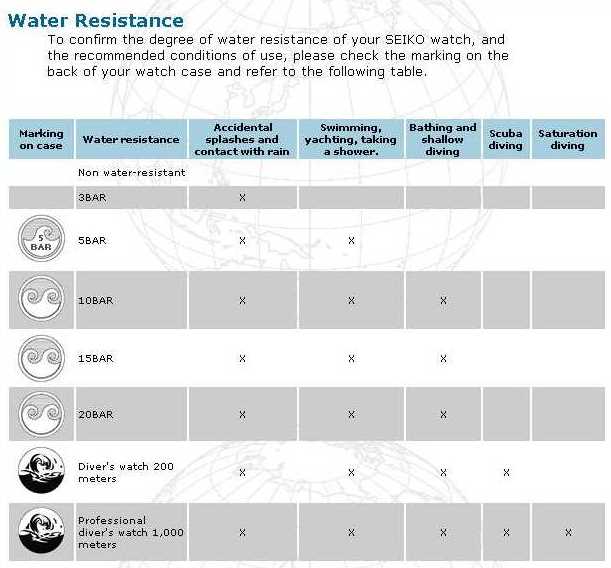Seiko has been using this table for decades explaining the water resistance of the watches. 15 bar stems from the 1980’s, 15 atm watches are not made anymore. Currently the watches are 3, 5, 10, 20, 30 or 100 atm.
Simply stated, the small Seiko5 watches in general are not suited for swimming, they are 3atm, accidential splashes of water doing the dishes won’t be a problem, but remember to keep them dry. Except for the SNKD97-99, SNKE01-03, those are 5 atm, I still do not recommend swimming with them, but taking a shower is OK.
The larger Seiko5 Sports series are 10 atm: suitable for swimming. The crowns are not screwed in, so beware not to touch the crown while swimming.
20 atm watches are safe to swim with, just take care of having crown screwed in (with the SNA411 chrono, also check the pushers). Seiko makes a distinction between 20 atm watches and 20atm divers’watches, this means that the 20atm SNA411 is not suitable to dive with.
After installing sapphire, I guarantee the water resistance to be the same as before installing the sapphire.
Water resistance of the watches depends on the gaskets, I replace all gaskets needed with original Seiko gaskets when I install sapphire. When a jewellers says they need to pressure the watch to make it water resistant, go away. Putting pressure on a watch is a manner of checking the water resistance AFTER assembling the watch, and more pressure means more water resistance (and more expensive checking/testing). It is to show the watch maker has done his job right, and should not be charged.



